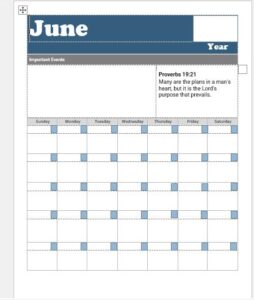
Some children just naturally love to learn, they’re easy to teach because they soak up information like a sponge. They beg you to teach them math and reading and more.
Other children don’t gravitate to learning on their own. They’re likely still learning new things every day, but doing formal learning just isn’t their thing. If you set a workbook in front of them, they wilt . . . visually wilt. You know what I’m talking about. It’s a battle each day to get them to sit down to learn.
So how do we help these children learn math and reading and all the other subjects we’re supposed to be teaching them?
We help them develop an internal motivation to learn!
We can foster a love for learning that lasts a lifetime. That’s what homeschooling is all about! Teaching your children HOW to learn and lighting a fire in their hearts to WANT to learn.
We may need to change the way we talk about school. Don’t call it “school WORK” or tell your children they need to get their workbook pages done before they can go play and have fun. We’re sending messages that school is work and not fun when we use that verbiage.
Frankly, another possibility is that we may need to change the way we’re teaching our children because we might be using teaching methods that DO making learning feel like work and are NOT at all fun.
To foster a love for learning, school might look very different than what we were used to in the public school or large classroom setting. Homeschooling offers the opportunity to individualize our child’s learning to fit their needs and interests.
Here are 6 tips to help foster a love for learning in your child and motivate them to learn:
1. Use Delight-directed learning or an interest-based approach.
This is so simple! Watch to see what interests your child, and then give them the resources to learn more about it. Use their interests to practice skills they might do for school anyway: reading, writing, presenting information, art, etc.
For example, when we were reading My Side of the Mountain by Jean Craighead George, one of our boys was fascinated by the falcon in the story. We took time to learn more about falcons, with him doing a lot of the research and sharing it with the family.
Delight directed learning restores a love for learning because the student is studying something they are interested in! You can add this into your usual school day, or you can use this approach to learn much of what is needed each day.
Check out this post by one of my favorite bloggers, Marianne with Homeschooling with Dyslexia to learn more:
2. Figure out your child’s preferred learning styles.
We don’t all learn the same way! Some people prefer a hands-on, experiential approach, while others can read about something in a book and enjoy learning that way. If you’re teaching a more active, hands-on learner with textbooks and workbooks, they will likely get frustrated and dislike learning. Just adding some activities to your approach might be all they need to enjoy it more. Knowing your child’s learning style preferences is empowering!
One of my favorite learning style approaches is the Mind-Style model by Dr. Anthony F. Gregorc. Check out my blog Understanding How Your Child Learns to learn about this model. I also have a free learning style evaluation that you can download to help you figure out your child’s learning style preferences based on this model. It includes tips for teaching a child with each learning style preference. A great book to learn more about a variety of different learning style models is The Way They Learn by Cynthia Tobias.
3. Praise and encourage your child, building their confidence in their ability to learn.
We can discourage a child with just one negative comment about their efforts. I’m not suggesting you speak untruths, but rather look for things that you can say to encourage your child related to their studies or efforts to learn. Be positive about how they are doing in their learning as much as possible. Be careful that your expectations aren’t too high for where they are ability-wise.
If you have a child that’s struggling with reading or math, then look for skills and things that they’re good at. Children with dyslexia, for example, tend to be very intelligent, even gifted! They just learn differently. If you try, you can always see some skill or ability that you could compliment and encourage them in. Albert Einstein was dyslexic, and he was brilliant! A child with a learning disability typically just learns differently, and as parents, we can help them understand how they learn and help them feel confident in their ability to learn.
Keep in mind that when a child has a learning disability or glitch, they may be resistant to learning because it’s difficult for them to learn and they feel frustrated. They need extra encouragement and guidance to understand their strengths, how they learn best, and what they can do to overcome or compensate for their disability.
(My next post will be on helping children learn if you suspect or know that they have a learning disability. There are so many resources for you if this is your situation!)
4. Lead by example – be passionate about learning and let your children see your enthusiasm often!
Our words and our attitude as parents make such a difference in how our children behave and respond! If we’re bored with homeschooling, they will be too! But if we’re excited about learning new things each day, that will also rub off on our children. They follow our example. Talk often about what a privilege it is to be able to learn new things, and to learn them at home together!
If you’re currently bored or burned out with homeschooling and finding it difficult to be positive, I encourage you to take a week or longer off and get rejuvenated! Seek the Lord for guidance on what you need to help you get excited about learning and teaching your children again.
5. Use games, field trips, and activities for learning.
Most children love to play games or learn by going on a field trip or doing an activity. It may take a little more work for us as parents, but the benefits far outweigh the extra work to make it happen. The enthusiasm a field trip can generate for future learning on a topic is amazing!
For ideas on field trips in the Minnesota area where I’m from, go to https://www.mnfieldtriplibrary.org/. Or google search field trips in your area and you’ll likely find many options.
There are lots of educational board and card games available today. In fact, there are families that learn primarily by playing games called Gameschoolers– search on Facebook and join a group if this interests you.
Read this blog post on the benefits of using games for learning. I have several blogposts with lists of games for learning different subjects (type in games in the search box to find them) and my resource page also has game suggestions.
I found that the unit study approach typically has fun activities for learning plus it works well to keep everyone enthusiastic about learning. This approach seems to work for all learning style preferences, and its fun to learn together as a family. One child’s enthusiasm about a topic will also be contagious for the rest of the family.
Want to check out a short unit study to see if you like them?
Try Amanda Bennett’s Unit Studies or Gather ‘Round , both have great options for unit studies.
6. Most importantly, PRAY for your children, that they will develop a love for learning.
God cares about our children more than we do, and He can help them in this area. If they’re being resistant to learning, pray for God to change their attitude and that He’ll give you wisdom to help them grow in their desire to learn.
I pray God will bless you as you seek Him for help in motivating your children to learn.
I’m available for homeschool consultations to give you more individualized guidance for your family and your situation. Please contact me at krismcoxconsultant@gmail.com to set up a consult today!







